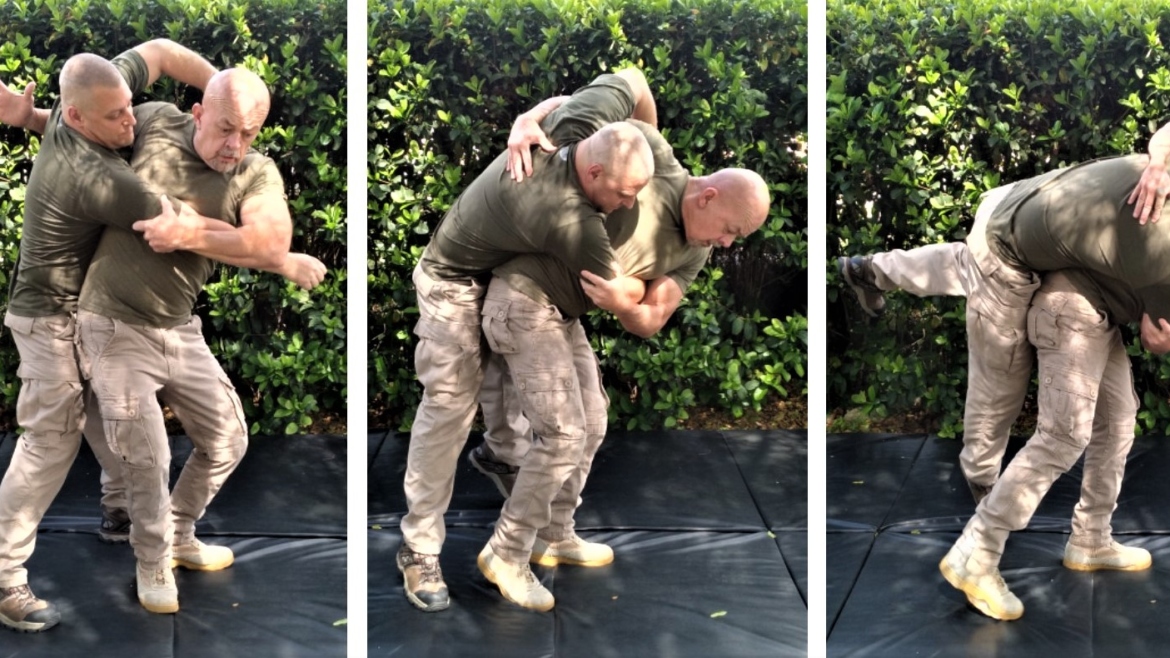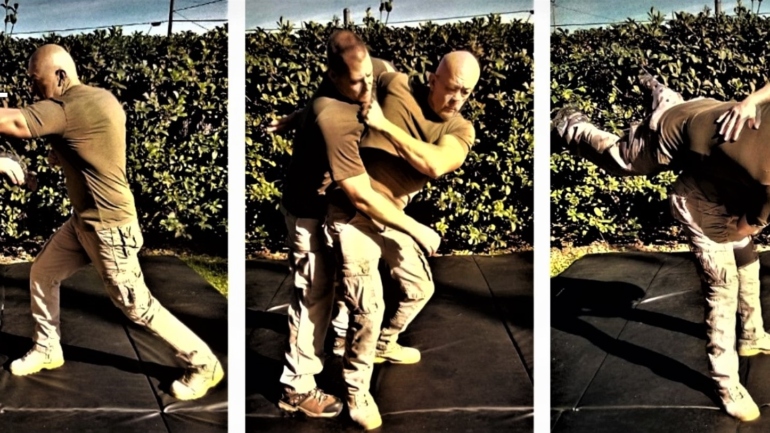A sweeping hip throw is particularly effective when your opponent is moving forward or pushing on you or if he widens his stance in an attempt to prevent you from executing the hip throw. The sweeping hip throw uses the aggressor’s forward momentum then sweeping your aggressor’s supporting leg and simultaneously continuing to take him to the ground while you remain standing. This variation utilizes a back-step entry as opposed to stepping in and pivoting 180 degrees.

(1.) Your opponent attempts a right haymaker type punch at your head and you pick up on the attack late and just have time to bring yours arm up to protect your head.
(You also have the option of delivering a strike with the right elbow or blade of forearm into face, neck or throat immediately after the cover before going into step (2.) for the throw.)
(2.) Immediately step with your right foot toward the inside of the aggressor’s right foot. The toes on your right foot should be pointing toward 9 O’clock. Step in between your opponent’s feet and behind your right foot with your left foot. Your feet should be in between your opponent’s feet with your knees bent. The heel of your left foot should be between his feet. The back of your left heel should be even with the arch of his foot or deeper with the toes of your left foot just about even with the opponent’s toes. At the same time, rotate your waist and under hook his left arm at the armpit with your right arm and around the back of your opponent’s body anywhere from his waist to his head, depending on the size of your opponent.
(3.) Rotate your hip up against your opponent. Your hips must be lower than his. Use your right hand to pull the aggressor up on your hip to maximize contact. Pull your opponent’s arm across your body and, at the same time, slightly lift him off of the ground by bending at the waist, straightening your legs.
(4.) Once the opponent starts to come off of the ground, forcefully sweep his upper right thigh back with your right leg. At the same time, continue to pull his right arm forcefully to the left across your body to assist in bringing him to the ground.
Common mistakes in training
If your training partner cannot be lifted easily, your body positioning is not correct. This generally means you are not stepping in deep enough and are going in too high. Make sure your knees are bent and your belt line is well below his belt line.



